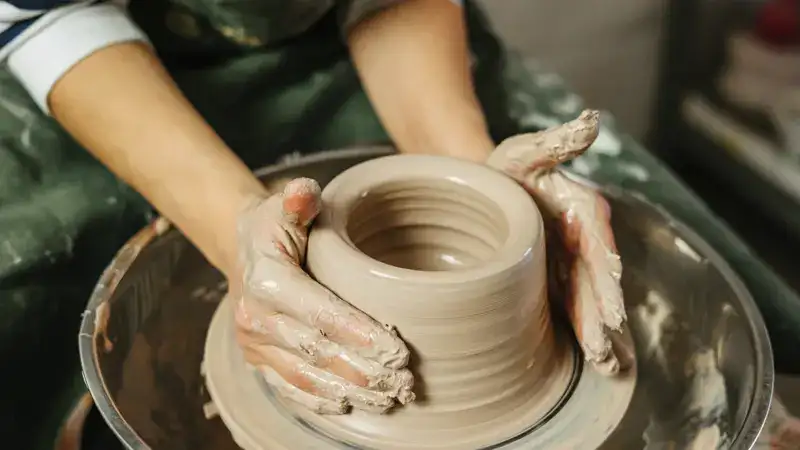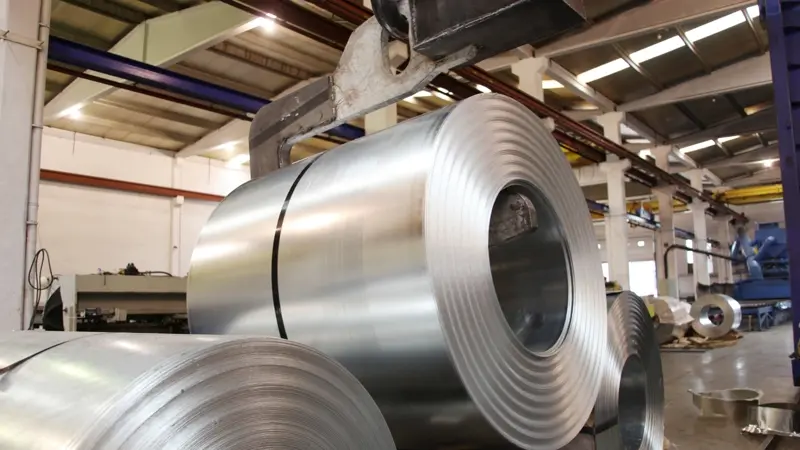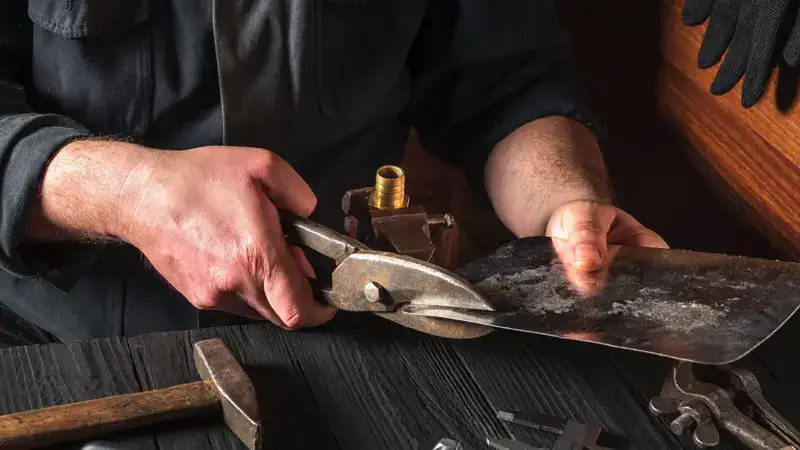Pottery making is a craft as ancient as civilization itself, where the natural allure of earthen materials is shaped by the precision of expert hands. Venturing into this practice reveals a collection of essential tools, each crafted to turn simple clay into works of art. Mastery of these tools is crucial, regardless of whether you are a well-practiced potter or a beginner mesmerized by the wheel’s rotation. Embark on this path, perfect your methods, and let your creativity be expressed through your hands as you familiarize yourself with the vital tools of pottery creation.
Table of Contents
From Clay to Creation: the Pottery Making Toolkit
Embarking on a pottery-making journey begins with mastering the essential tools of the craft. Familiarity with these tools not only improves efficiency but also broadens the scope of artistic exploration. Let’s explore the core toolkit every ceramist should have to sculpt, shape, and finish their clay creations with precision and elegance.
1. Begin With Wedging: Essential Pottery Tool for Preparing Clay
The quality of the prepared clay is fundamental to the success of any ceramic creation in pottery making, laying the groundwork for subsequent artistic endeavors within the field. It is critical to maintain the clay’s malleability and ensure it is free from defects that might weaken its structure. For this purpose, potters must use wedging tables or boards, which are durable surfaces made of plaster or fine-grained hardwood designed specifically for processing clay.
On these surfaces, potters engage in a process similar to kneading bread dough, carefully spiraling and folding the clay to uniformly spread moisture and eliminate air pockets. This step, while appearing straightforward, is incredibly important. Properly wedged clay is better equipped to withstand the intense heat during kiln firing, where any hidden air bubbles or uneven textures can cause cracks or imperfections that would otherwise waste hours of meticulous work.
2. Potter’s Wheel: Spinning Tales of Clay
The potter’s wheel is an iconic tool, intimately linked to the essence of pottery making. Over time, its design has progressed from the traditional kick wheel, activated by the steady foot movement of the potter, to the modern electric wheel. These electric models are favored in contemporary pottery for their consistent speed and ease of use. The ability to adjust speeds precisely has made them particularly valuable, as it gives potters exacting control over their creative process. With hands bathed in slip and moving delicately or with vigor, potters can shape pliable clay into various objects on the wheel’s stable platform.
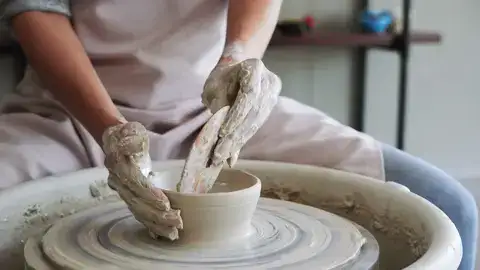
3. Rib Tool: Sculpting the Perfect Curve in Pottery
The utility of a rib tool in pottery is immense. It is essential for artists who engage in wheel throwing or cherish the precision of hand-building techniques. The implement serves as a natural extension of the artist’s hands, playing a significant role in sculpting and smoothing malleable clay, as well as imparting a flawless finish devoid of imperfections. Additionally, it compresses the clay, enhancing its structure and reducing the likelihood of flaws and weaknesses. One of its most outstanding features is its flexibility; it can accomplish detailing that fingers alone cannot, such as crafting precise curves and complex designs on the clay’s surface.
4. Tooling Around: Hand Tools for Detailing
In the craft of pottery, achieving creative excellence involves more than just shaping the adaptable clay or using the pottery wheel. Key to this process are specialized trimming tools such as loop or ribbon tools, which are essential for sculptors who aim to remove excess clay with both precision and artistry. These tools allow artists to skillfully create foot rings that act as the foundation for their pieces, or to etch intricate patterns and textures that give character to a simple clay form. With a range of shapes at their disposal — loops for smooth curves, triangles for sharp lines, and squares for angles — potters can explore different contours and depths to truly personalize their work with their unique artistic vision.
5. Calipers: Potter’s Companion for Accuracy
In pottery making, a caliper is a precise instrument emblematic of a potter’s dedication to accuracy. It is essential for accurately measuring the diameter and depth of pottery as it rotates on the wheel. This ensures that each curve and outline meets the predetermined design specifications, which is especially crucial when creating consistent sets, such as a group of mugs or bowls designed to fit together perfectly. Calipers maintain this uniformity in silence. Moreover, these tools are vital for the functionality of pottery pieces, such as ensuring lids fit snugly on pots and jars to form an airtight seal.
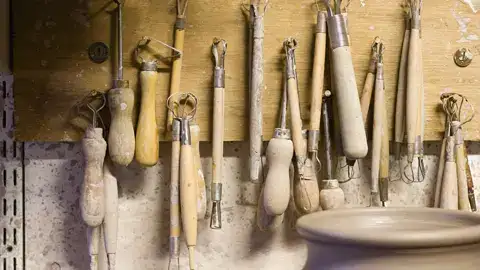
6. Wire end tools: The Unsung Heroes of Pottery Making
Wire end tools are invaluable assets in pottery making for potters at all skill levels, featuring either a strong wire or a thin metal blade firmly connected to an ergonomic handle, which ensures a secure grip and precise control. For skilled potters, these tools are essential; they easily slice through soft clay to separate it into slabs ready for shaping. These tools also serve a dual purpose, acting like a sculptor’s tool to carve detailed lines and textures into the clay, resulting in distinct patterns on the finished product.
7. Achieving Smoothness with Sponges and Chamois
Though sponges and chamois cloths may seem minor compared to other tools, they are crucial in the pottery throwing process. As an artist shapes clay on the wheel, ongoing motion can create small flaws and a rough texture. Sponges address this issue effectively; they lightly moisten the clay, allowing for smooth and subtle adjustments without adding too much water. Chamois cloths also play a critical role by softly evening out any tiny bumps or imperfections, resulting in a surface that feels good to the touch and looks visually appealing. Despite their simplicity, sponges and chamois cloths make a substantial difference in the final artwork.
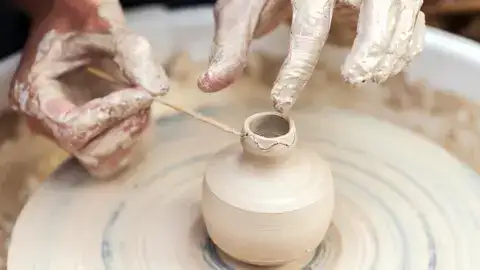
8. Pin Tools and Needles: The Secret Weapons of Expert Potters
In pottery making, the use of needles and pin tools is essential for achieving precision. They enable artists to carve delicate patterns and shapes with exceptional precision, akin to a surgeon’s scalpel. Beyond aesthetics, these tools are crucial for adding functional features such as drainage holes in pottery, which are vital for plant survival. They also simplify the creation of air escape holes in hollow sculptures, preventing damage from internal pressure during the firing process. These tools may be simple, but their role is significant in transforming clay into functional and artistic objects.
9. Kiln: Crafting Heirlooms
The kiln is an essential piece of equipment for any potter, acting as the critical transformational tool that turns delicate clay forms into strong, lasting ceramic pieces. Potters often invest in a kiln after they have developed their skills and are ready to take their craft to a more serious level. The acquisition of a kiln is a substantial milestone, indicating a shift from creating ephemeral items to making permanent, resilient ones. The initial cost of a kiln is offset by its ability to enhance the durability and aesthetic quality of each piece, enabling potters’ work to achieve its highest potential.
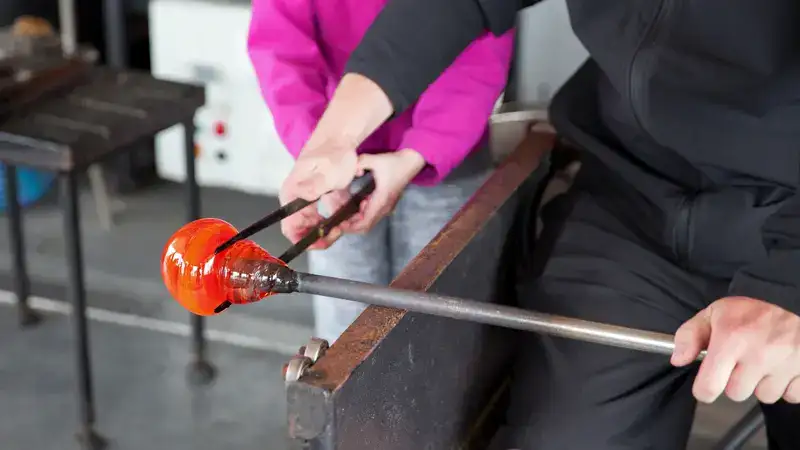
The Bottom Line
The quality of your pottery making largely hinges on the tools at your disposal. For instance, you start by kneading clay on a wedging table and throw it onto a dependable wheel, then meticulously sculpt it using precise hand tools before firing your piece in a well-equipped kiln. Every single tool contributes to the end result — a stunning piece of ceramic art.
If you’re eager to explore the world of pottery or enhance your skills in this time-honored craft, assembling a collection of basic, but flexible, tools is fundamental. This collection is as important as the development of your creative vision. Remember, every renowned potter began with uncomplicated designs and basic tools; the key lies not only in what tools you possess but in how adeptly you employ them.
Equipped with this understanding of essential pottery making tools, it’s time to dive into the creative process. Get ready to get your hands dirty and let your artistic flair flourish as you set out on this fulfilling creative path.
